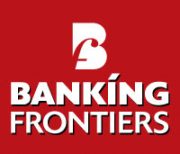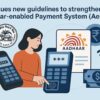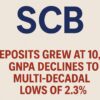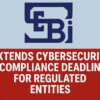 Reliance Securities is in the plan-out stage in designing a sales competency model for its feet on the street:
Reliance Securities is in the plan-out stage in designing a sales competency model for its feet on the street:
Meenaa Sharma, Chief Human Resources Officer (CHRO) at Reliance Securities, reveals the use of various psychometric assessment tools for hiring and development.
Mehul Dani: Do you make use of psychometric tests for recruitment and for training purposes? If so, what are these?
Meenaa Sharma: We have been using various psychometric assessment tools for hiring as well as development over the years. As of today, we are extensively using the Predictive Index (PI) tool for both hiring and talent management/development. We have also conducted a development program in the past through CEB – SHL (formerly Corporate Executive Board – Saville & Holdsworth) as well.
How do you measure and analyze the capabilities of the respondents?
We use the PI tool for managerial assessment. It provides insight into the natural workplace behaviours of prospective and existing employees – resulting in improved hiring decisions, team performance, overall communication and workforce productivity. The tool is an untimed, free-choice, stimulus-response tool – far more than a personality test.
As a first step, a Performance Requirement Options (PRO) is designed for job analysis, which helps us understand the specific behaviors that lead to the most effective performance in a particular job, given the realities of the organization’s methods, markets, processes and management. It describes the drives and behaviors that are necessary for success and gives us insight into similarities and differences that might exist in various individuals’ approaches to the same job. The PRO defines the pre-requisites of how a graph of an individual looks like for a particular role.
Next, an assessment survey is assigned to a prospect that has an adjective questionnaire, which describes him/her. This generates an individual’s personality graph which gets measured against the PRO. This helps us identify whether an incumbent is apt for a particular role and fitment in our organization culture. For planning development, additionally, a cognitive ability and 360-degree assessment get assigned, which then gets combined with personality assessment results, to give us a detailed insight of an incumbent and thereby defining an individual development plan (IDP) based on the report.
Since when have you been conducting these tests? Are the outcomes satisfactory?
We have started our assessment-based journey in 2015. Since then, we have been extensively using it for hiring and various development purposes. Over the years, we have seen reduced attrition and better productivity across roles.
This FY, we have taken a step ahead and designed a program for leadership and the core team. The objective is to align the organization strategy with individual capabilities and also to create an alignment between organization readiness, strategic priorities of the leadership team and critical talent. The intervention confirms agreement on strategic priorities, identifies the strategy type, and ensures that the right people are in place to succeed. The strategy assessment results will help us to create a talent strategy that bridges the business plan and results.
We are also in the plan-out stage in designing a sales competency model for our feet on the street (sales) employees ensuring them to be sales competent and fitment in the organization.
How often do you hold these tests for existing employees and what is the weightage these tests hold in the overall grading of the respondent?
In recruitment, the tests compulsorily get conducted for any hires in a team management role. The content gets reviewed every year and accordingly changes are made. For the developmental journey, the tests consist of cognitive ability and 360-degree feedback from various stakeholders and teams while creating a development plan for the individual. All three tests (personality, cognitive and feedback) hold equal weightage for assessment while designing a developmental plan.
However, using a tool during the hiring process does not yield any test score percentage. It is purely based on an individual’s personality with respect to the job role and organization’s culture that defines overall fitment. These assessments never place an individual in a pass or fail category. For instance, if a particular individual is good with people management and he/she has less competent in design, then there is no grading as such. Rather, it concludes that the individual remains good at social behaviour and remains better at detailing.
How are these tests administered?
At the start of our journey, we initiated an offline workshop for various roles across the organization. But over the years, all our tests are virtual, and we have been extensively using cloud technology to conduct these assessments. All our assessments are hosted externally on the vendor’s portal which we access locally. In the past, The vendors with whom we have worked extensively are CEB-SHL & Predictive Index.







